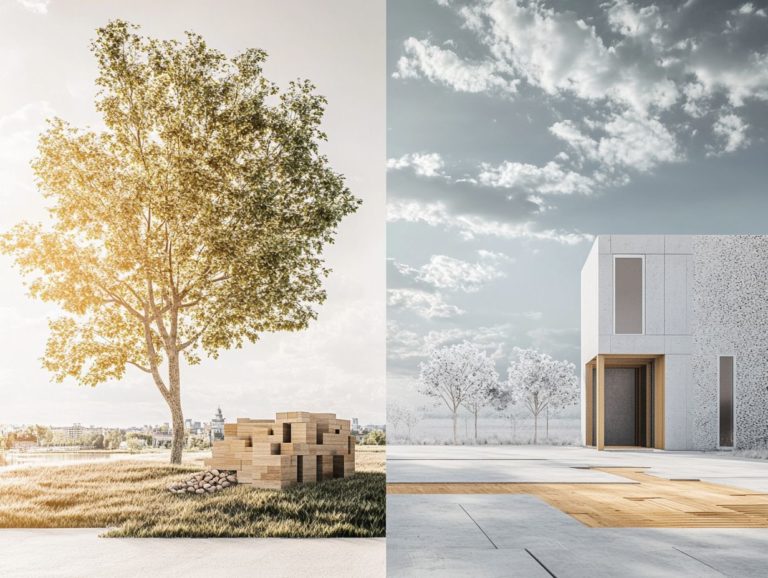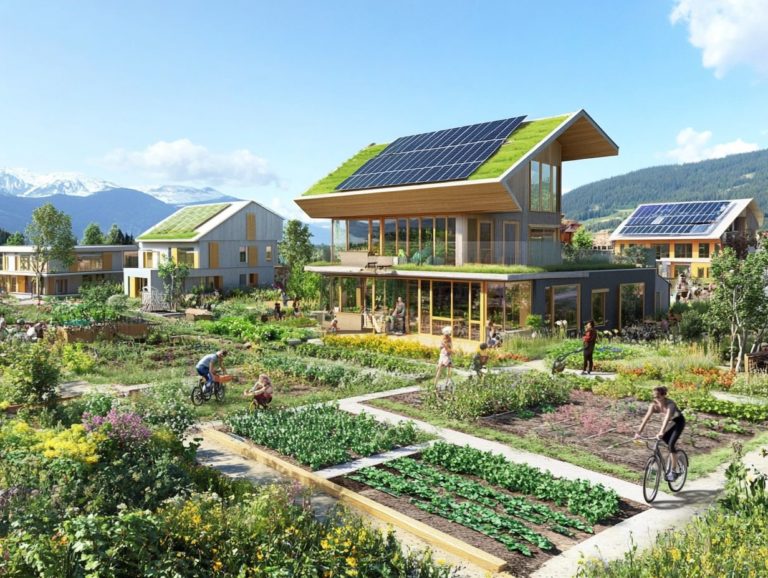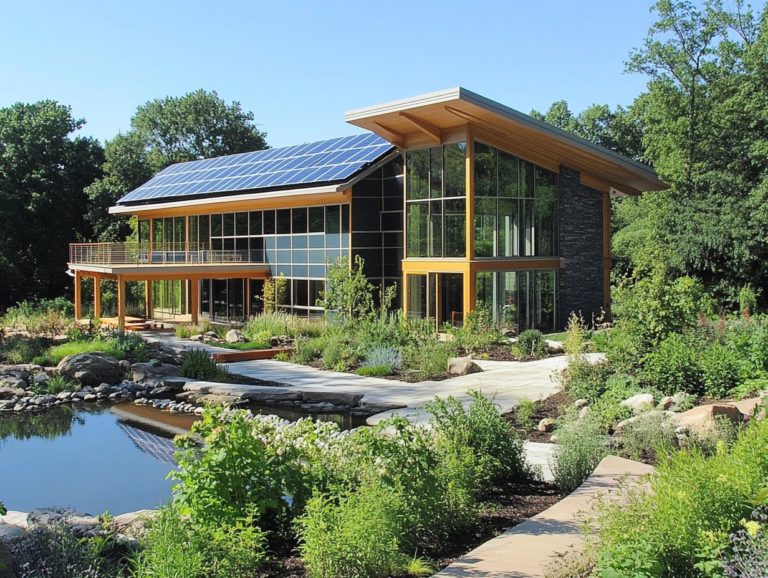Eco-Friendly Building Certifications Explained
In today’s world, the drive for sustainability is more crucial than ever. Eco-friendly building certifications are at the forefront of this movement.
These certifications serve as a benchmark for environmentally responsible construction. They provide benefits that range from minimizing environmental impact to reducing costs.
This article delves into the various types of eco-friendly certifications, such as LEED and BREEAM. It outlines the process for obtaining them and highlights essential considerations for integrating sustainable practices into your building design.
Explore how these certifications can revolutionize not only the way you build but also the way you live.
Contents
- Key Takeaways:
- Benefits of Using Eco-Friendly Building Certifications
- Explore Eco-Friendly Building Certifications
- How to Obtain Eco-Friendly Building Certifications
- Implementing Sustainable Practices in Building Design
- Frequently Asked Questions
- What are Eco-Friendly Building Certifications?
- How are these certifications different from each other?
- Why should a building seek Eco-Friendly Building Certifications?
- What types of buildings can obtain these certifications?
- How can a building obtain these certifications?
- Are there any ongoing requirements for maintaining these certifications?
Key Takeaways:
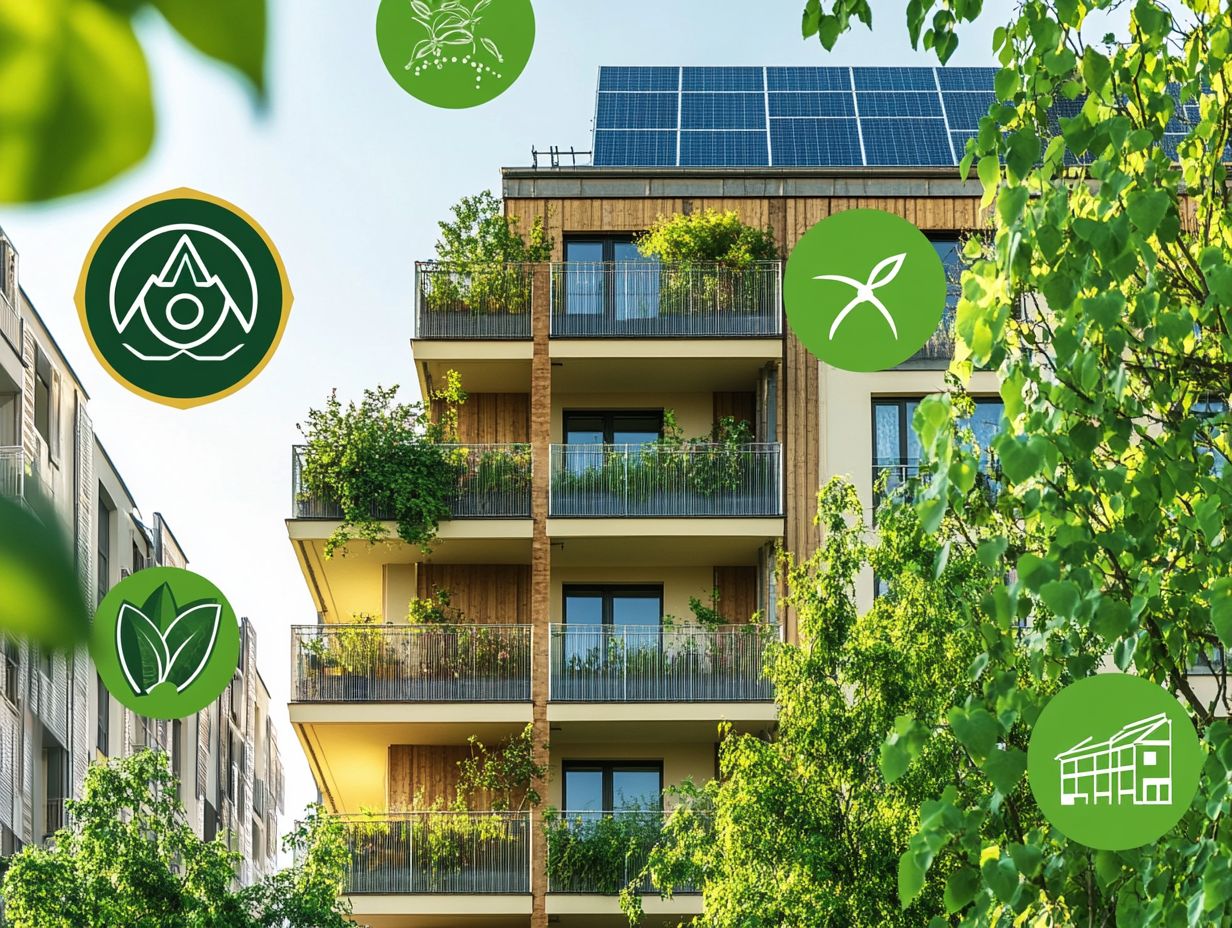
Eco-friendly building certifications ensure environmentally responsible and sustainable practices are implemented in building design, construction, and operation. Benefits of these certifications include reducing environmental impact and cost savings in the long run. Common certifications include:
- LEED: A certification that assures buildings are energy-efficient and environmentally friendly.
- BREEAM: A certification that promotes sustainable building practices.
- Green Globes: An environmental rating system for commercial buildings.
What are Eco-Friendly Building Certifications?
Eco-friendly building certifications are independent verifications that confirm your building’s commitment to environmental standards and sustainable practices throughout its construction and lifecycle.
They cover vital areas like energy efficiency, water conservation, and minimizing your carbon footprint.
These certifications also promote environmental stewardship and enhance your property’s value and market appeal.
By securing these certifications, you ensure that your architectural design aligns with comprehensive sustainability goals. This can make a significant impact on the ecological quality of the built environment.
It’s crucial to understand the importance of these certifications now, especially as institutions like the United States Environmental Protection Agency advocate for green building practices to meet critical sustainable development objectives.
Each certification type serves a distinct purpose. For example, LEED emphasizes overall building performance, while WELL focuses on the health and well-being of occupants.
Incorporating these certifications into your projects helps meet regulatory requirements, secures grants, and cultivates a culture of sustainability within the construction industry. Your commitment can make a huge difference in mitigating environmental impacts, setting a standard for responsible building practices that contribute to a healthier planet.
Benefits of Using Eco-Friendly Building Certifications
Adopting eco-friendly building certifications brings a wealth of benefits, including significant energy savings and lower maintenance costs.
These advantages improve health and well-being for occupants and boost property value in the real estate market.
As the demand for greener buildings continues to rise, the certification process aligns with your commitment to environmental stewardship. It also grants you a competitive edge by adhering to energy efficiency standards and minimizing environmental risks linked to climate change.
Consider pursuing eco-friendly certifications for your next building project to help create a sustainable future.
Environmental Impact
Eco-Friendly Building Certifications reduce the environmental impact of construction. They focus on minimizing the amount of carbon dioxide produced and promoting waste reduction.
By embracing sustainable practices, you can lower greenhouse gas emissions while enhancing ecological quality. This ultimately benefits both the environment and the community.
Certifications like:
- LEED (Leadership in Energy and Environmental Design)
- BREEAM (Building Research Establishment Environmental Assessment Method)
- Green Globes
offer structured frameworks to guide you in adopting technologies that use less energy and renewable energy sources. They help minimize energy consumption through thorough building assessments that evaluate insulation quality, heating systems, and lighting efficiency.
These certifications also promote effective waste management strategies. They encourage recycling and composting during construction and operation. By adhering to these standards, you not only reduce ecological footprints but also contribute to building community resilience in the face of climate challenges.
Cost Savings
Want to save money while helping the planet? Investing in Eco-Friendly Building Certifications is your answer! These certifications can lead to remarkable cost savings over time through enhanced energy efficiency, reduced maintenance costs, and optimized construction fees.
As a building owner or project team member, you can capitalize on these financial benefits while adhering to stringent design standards. This boosts your property s value in the competitive real estate market.
For example, properties that incorporate energy-efficient HVAC systems or solar panels often see lower utility bills. Energy expenses can sometimes be slashed by up to 30%. Using sustainable building materials, such as recycled steel and low-VOC paints, minimizes upkeep and maintenance costs while contributing to longer-lasting structures.
These cost efficiencies enhance your return on investment and align with the growing consumer preference for environmentally responsible choices. By embracing eco-friendly practices, you pave the way for long-term financial sustainability. This demonstrates that being environmentally conscious can indeed go hand in hand with smart fiscal management.
Explore Eco-Friendly Building Certifications
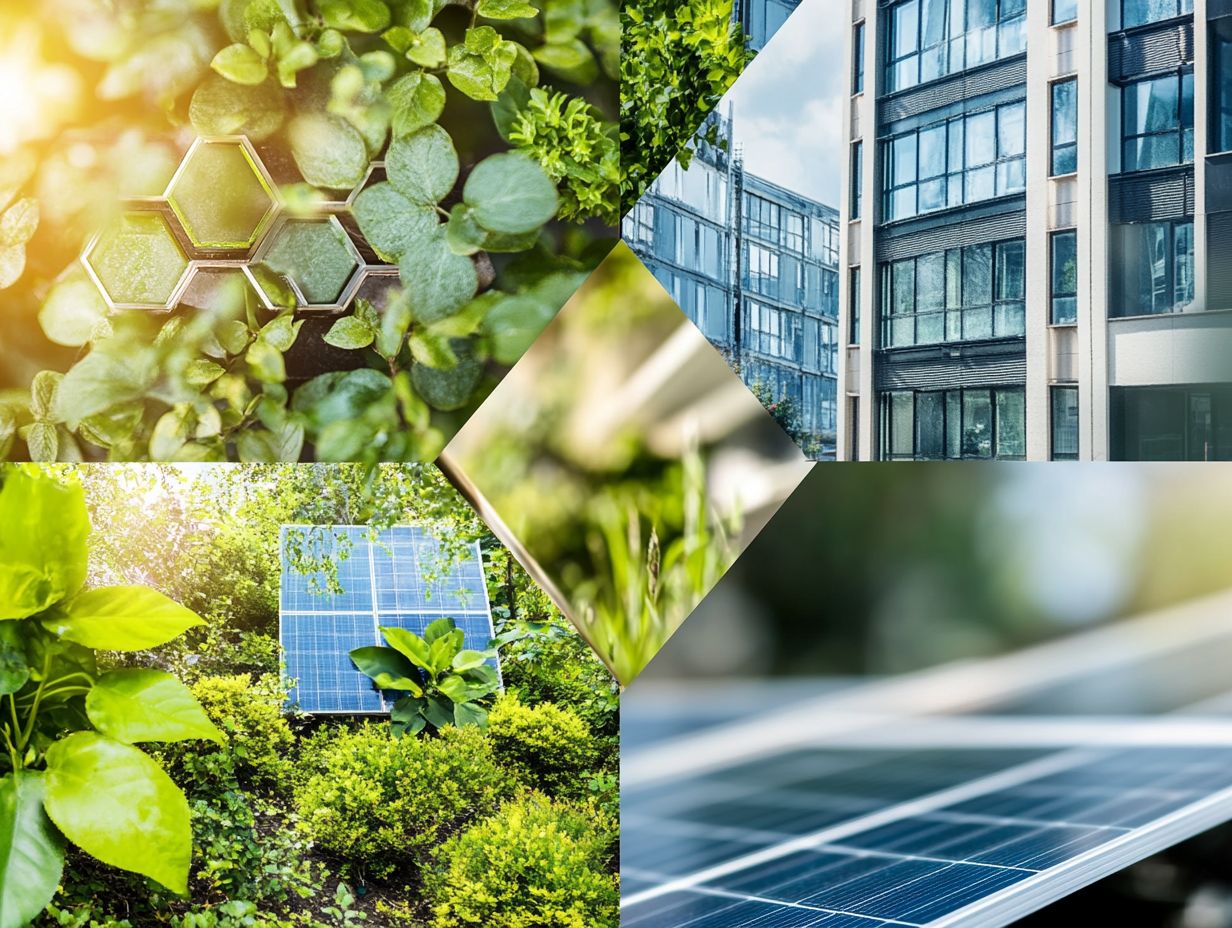
Explore the various types of Eco-Friendly Building Certifications, including understanding the benefits of green certifications. Each one promotes sustainable practices and ensures ecological quality in construction.
Notable certifications include:
- LEED (Leadership in Energy and Environmental Design)
- BREEAM (Building Research Establishment Environmental Assessment Method)
- Green Globes
- Energy Star
- The Living Building Challenge
Each certification offers unique methodologies and criteria. These systems evaluate energy efficiency, environmental performance, and the health and well-being of building occupants. They establish high standards for sustainable building practices.
LEED Certification
LEED certification, which stands for Leadership in Energy and Environmental Design, is a prestigious global standard for green building. It highlights the importance of sustainable design, construction, and operational practices in the built environment.
This certification meticulously evaluates various factors including energy efficiency, water conservation, indoor environmental quality, and sustainable site development. It offers a robust framework for effective environmental management.
Through a points-based rating system, your building can achieve silver, gold, or platinum status based on its performance in these critical categories. The advantages of attaining LEED certification reach far beyond mere energy savings. Property owners often enjoy enhanced marketability, reduced operating costs, and improved health and productivity for occupants.
Landmark projects such as the Bullitt Center in Seattle and the Edge in Amsterdam serve as shining examples of sustainability. They illustrate the significant benefits of abundant natural light, minimized energy consumption, and green roofs.
These projects showcase how LEED-certified structures play an essential role in advancing global environmental objectives. Consider pursuing LEED certification to enhance your building’s value and contribute to a sustainable future.
BREEAM Certification
BREEAM certification, short for Building Research Establishment Environmental Assessment Method, stands as one of the oldest and most comprehensive green building certifications available. It focuses on promoting ecological quality and ensures buildings meet high environmental standards across various sectors.
When you pursue BREEAM certification, you ll find that it evaluates a range of factors, including energy consumption, water use, indoor environmental quality, and overall sustainability. This provides a careful evaluation process for project teams.
This certification covers several categories, such as Offices, Residential, and Retail, each with specific criteria designed to tackle sector-specific impacts. The scoring system is remarkably thorough, assigning points based on performance in different environmental areas; the higher the score, the better the sustainability practices.
By establishing benchmarks for energy efficiency, site management, and resource use, BREEAM incentivizes developers to follow stringent environmental guidelines. It also plays a crucial role in advancing global green building movements. This approach helps reduce the carbon footprint and promotes sustainable development in the built environment.
Green Globes Certification
Green Globes certification offers you a flexible and user-friendly third-party certification system designed to assess the environmental performance of commercial buildings. It champions sustainability and promotes efficient resource use throughout the construction process.
This certification evaluates key aspects such as energy efficiency, water conservation, and indoor environmental quality. This makes it an accessible choice for project teams dedicated to eco-friendly building practices.
By engaging in a streamlined assessment process, you can earn points in areas such as sustainable site development and material selection, ultimately achieving one of the four certification levels. This approach helps reduce your environmental impact while providing a clear path for improvement and innovation.
Owners who successfully obtain the Green Globes certification often report lower operational costs and enhanced marketability for their properties. For example, a prominent office complex in Seattle realized substantial energy savings and improved tenant satisfaction by implementing green technologies an excellent illustration of the tangible benefits that come from embracing sustainable practices in the commercial real estate sector.
How to Obtain Eco-Friendly Building Certifications
Obtaining Eco-Friendly Building Certifications requires a careful certification process that needs your active commitment. You must integrate sustainable practices throughout your project’s lifecycle from design to construction and operation.
To secure these prestigious certifications, clearly show compliance with energy efficiency standards and ways to manage environmental impact.
Requirements and Process
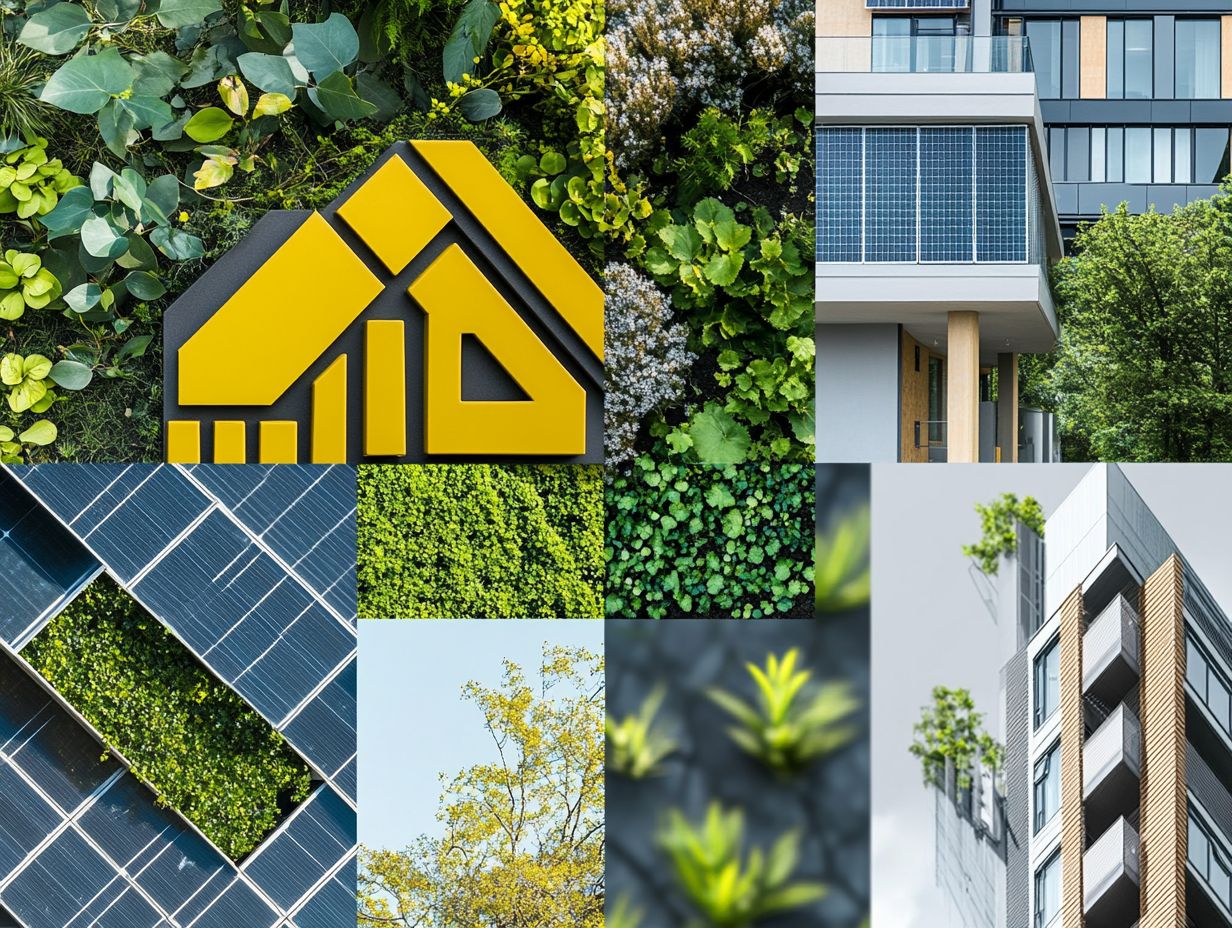
The requirements and process for obtaining Eco-Friendly Building Certifications can differ based on the specific certification system you choose. Generally, you’ll want to assemble a project team well-versed in sustainable practices and compile comprehensive documentation to showcase your compliance.
This means demonstrating energy efficiency measures, water conservation strategies, and adherence to established environmental standards throughout the construction process.
As you navigate these requirements, effective collaboration within your team is essential. Each member needs to grasp their role in gathering the necessary data and reports. Thorough documentation is pivotal, as it not only supports compliance but also provides a clear record for audits.
Challenges like time constraints and varying levels of expertise may arise, but these can be addressed by investing in training and streamlining your information-sharing processes. By fostering open communication and leveraging technology for efficient documentation, your team can significantly enhance its chances of successfully achieving certification while making a meaningful contribution to environmental sustainability.
Implementing Sustainable Practices in Building Design
Implementing sustainable practices in your building design is crucial for crafting environmentally responsible structures. These structures prioritize energy efficiency, resource conservation, and enhanced ecological quality.
This commitment benefits the community and elevates the value of the real estate market. Architectural design is at the heart of this endeavor. It guides your choices in building materials, layout, and systems that promote sustainable living while aligning with established environmental management standards.
Embracing this approach ensures that your projects contribute positively to both the environment and society.
Key Considerations for Eco-Friendly Buildings
When you embark on the journey of designing eco-friendly buildings, several key considerations demand your attention. Compliance with design standards and promoting health and well-being for users are paramount.
Reducing environmental risks throughout the lifecycle of the structure is essential. Striving for energy efficiency while minimizing your carbon footprint and waste generation is vital to achieving overall sustainability goals.
Choosing the right site is essential and can make a huge difference! The location greatly influences resource use and the surrounding ecosystem.
Thoughtful choices regarding materials favoring renewable or recycled resources are critical in enhancing overall sustainability.
Prioritizing occupant health through natural light, good air quality, and thermal comfort significantly improves the user experience. By weaving together these various elements, you can create spaces that meet environmental standards while cultivating a sense of community and well-being among occupants. Ultimately, this leads to buildings that resonate harmoniously with both nature and humanity.
Frequently Asked Questions
What are Eco-Friendly Building Certifications?
Eco-Friendly Building Certifications show that a building is designed with sustainability in mind. To ensure you select the best options, it’s important to understand how to choose the right green certifications that recognize buildings meeting specific environmental standards.
How are these certifications different from each other?
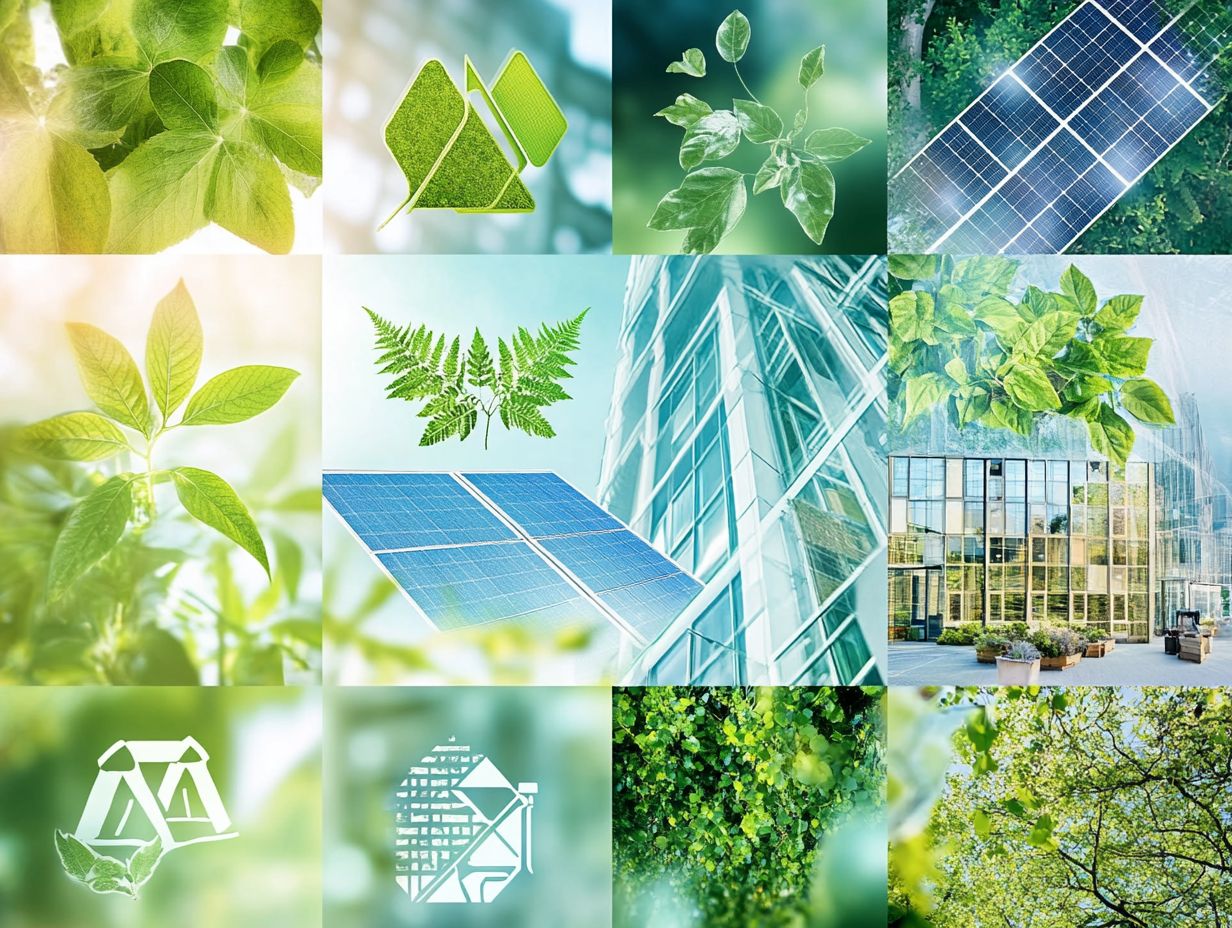
Each certification has its own specific criteria and guidelines for evaluating the environmental impact and sustainability of a building. They may also have different levels or tiers of certification, with some being more rigorous than others.
Why should a building seek Eco-Friendly Building Certifications?
Eco-Friendly Building Certifications not only demonstrate a commitment to environmental responsibility but also offer numerous benefits. These benefits include reduced operating costs, improved marketability, and a healthier, more comfortable indoor environment for occupants.
What types of buildings can obtain these certifications?
Eco-Friendly Building Certifications can be obtained by various buildings, including commercial, residential, and institutional structures. The criteria and guidelines may vary depending on the type and size of the building.
How can a building obtain these certifications?
A building can obtain Eco-Friendly Building Certifications by following the guidelines and criteria set by the respective certification organization. This may involve implementing sustainable design and construction practices, using environmentally friendly materials, and meeting energy efficiency standards.
Are there any ongoing requirements for maintaining these certifications?
Yes, to maintain their certifications, buildings may need to undergo regular audits and assessments to ensure they continue meeting the standards set by the organization. There may also be requirements for ongoing sustainability efforts and improvements.


